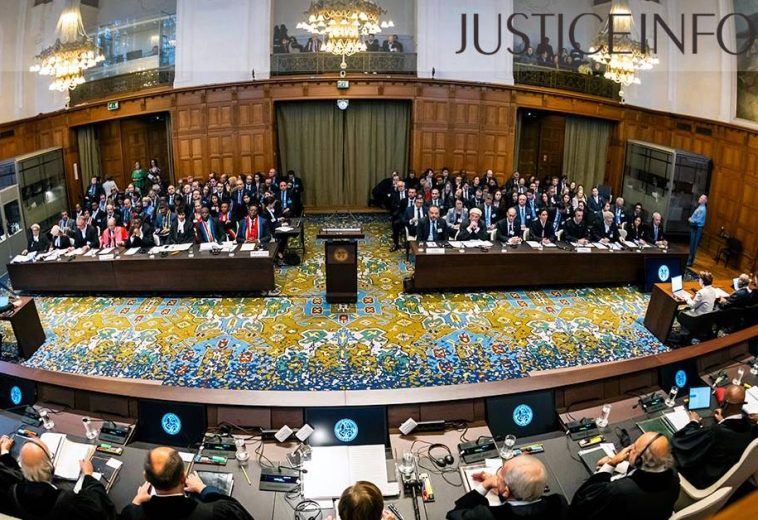“In the quiet solitude of the night, the Mombasa-Nairobi Highway whispers tales of triumphs and tribulations, echoing the spirit of Kenya’s journey towards progress,” stated Ngũgĩ wa Thiong’o, a Kenyan author and academic. Some routes are particularly notable in the history of transportation not just for their usefulness but also for the narratives they tell, the lives they have changed, and the environments they pass through. The Mombasa-Nairobi Highway, a ribbon of asphalt crisscrossing the center of Kenya, is one such famous route.
The Mombasa-Nairobi Highway, also known as the Mombasa–Nairobi Expressway, is a significant infrastructure project in Kenya and its origins can be traced back to the early 20th century, a time when colonial powers were carving out pathways to facilitate trade and administration in their African territories. Construction on the highway commenced in the 1890s under British colonial rule, aimed at connecting the bustling port city of Mombasa on the Indian Ocean coast with the capital city of Nairobi, nestled in the highlands. Initially conceived as a strategic artery for the movement of goods and personnel, the highway soon evolved into a lifeline for commerce, culture, and connectivity.
It’s a proposed four-lane toll highway linking Nairobi, the capital and largest city, to Mombasa, the country’s largest seaport. By length, the expressway will cover a distance of approximately 326 miles (525 km), the project was designated in 2019 and is expected to be completed by 2026, it aims to reduce travel times between the two cities from the current 6 to 10 hours to approximately four hours, economically, the highway is expected to improve roadway safety, reduce logistics costs along the Mombasa-Nairobi transportation corridor, and create an estimated 500 construction jobs and the construction cost is budgeted at US$2.1 billion, with private sector resources being mobilized for its development.
Throughout its evolution, the Mombasa-Nairobi Highway has served as a vital conduit for commerce, linking the coastal region’s vibrant markets with the economic hub of Nairobi and beyond. The highway facilitated the movement of goods, people, and ideas, fostering economic growth and cultural exchange along its route. From agricultural produce to manufactured goods, the highway became the backbone of Kenya’s economy, enabling businesses to thrive and communities to prosper. Beyond its economic significance, the highway also played a pivotal role in shaping Kenya’s social and political landscape, serving as a symbol of unity and cohesion in a diverse and rapidly changing nation.
Spanning a diverse range of landscapes, the Mombasa-Nairobi Highway offers travelers a glimpse into Kenya’s rich natural and cultural heritage. From the sun-kissed shores of the Indian Ocean to the rolling savannahs of the Rift Valley, the highway winds its way through lush forests, arid plains, and bustling towns, each offering its own allure and challenges. Along the route, travelers encounter a mosaic of ecosystems, wildlife habitats, and human settlements, each contributing to the unique tapestry of experiences that define the journey along the Mombasa-Nairobi Highway.
Over the centuries, the Mombasa-Nairobi Highway has weathered its fair share of challenges, from harsh environmental conditions to infrastructural bottlenecks. Yet, with each obstacle overcome, the highway has emerged stronger and more resilient, a testament to human innovation and perseverance. Advances in transportation technology, including the introduction of autonomous vehicles and sustainable energy sources, have further enhanced the highway’s efficiency and sustainability, ensuring its continued relevance in the 28th century. Despite these advancements, however, the highway continues to face challenges related to congestion, road safety, and environmental sustainability, underscoring the need for ongoing investment and innovation to ensure its long-term viability.
Beyond its practical utility, the Mombasa-Nairobi Highway symbolizes the unity and progress of the Kenyan nation. As a shared artery connecting diverse communities, the highway transcends ethnic, cultural, and regional divides, fostering a sense of national identity and solidarity. It serves as a tangible reminder of the bonds that bind us together as Kenyans, irrespective of our differences, and the possibilities that emerge when we work towards a common goal. As new generations of Kenyans embark on their own journeys along this historic route, they continue to add new chapters to the story of the Mombasa-Nairobi Highway, ensuring that its legacy endures for generations to come.
READ ALSO: Exploring Opportunities in Namibia’s Offshore Oil Sector
As we gaze into the future, the Mombasa-Nairobi Highway remains poised to play a pivotal role in shaping Kenya’s destiny. With ongoing investments in infrastructure and technology, the highway is poised to become a model of sustainable development, balancing the needs of economic growth with environmental stewardship. Initiatives such as the adoption of electric vehicles, the expansion of public transportation networks, and the integration of smart infrastructure technologies promise to enhance the efficiency, safety, and sustainability of the highway, ensuring that it continues to serve as a lifeline for commerce, culture, and connectivity in the 28th century and beyond.
The Mombasa-Nairobi Highway stands as a testament to the enduring spirit of human ingenuity, resilience, and connectivity. From its humble beginnings as a colonial thoroughfare to its status as a vital artery of Kenya’s economy and society, the highway has journeyed through time and transformation, leaving an indelible mark on the landscape and the lives of those it serves. As we reflect on the past, navigate the present, and chart a course for the future, let us remember the lessons of the Mombasa-Nairobi Highway – that with vision, determination, and collaboration, we can overcome any obstacle and continue to forge pathways toward a brighter, more sustainable future for all.


